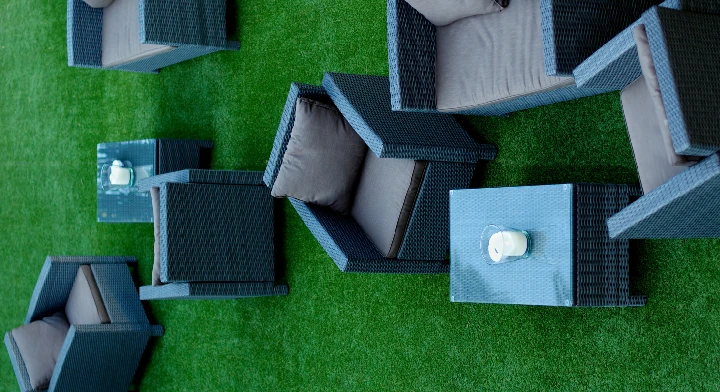
- Afrikaans
- Arabic
- Belarusian
- Bengali
- Czech
- Danish
- Dutch
- English
- Esperanto
- Estonian
- Finnish
- French
- German
- Greek
- Hindi
- Hungarian
- Icelandic
- Indonesian
- irish
- Italian
- Japanese
- kazakh
- Rwandese
- Korean
- Kyrgyz
- Lao
- Latin
- Latvian
- Malay
- Mongolian
- Myanmar
- Norwegian
- Persian
- Polish
- Portuguese
- Romanian
- Russian
- Serbian
- Spanish
- Swedish
- Tagalog
- Tajik
- Thai
- Turkish
- Turkmen
- Ukrainian
- Urdu
- Uighur
- Uzbek
- Vietnamese
garden turf grass
Dec . 12, 2024 10:43 Back to list
The Importance of Garden Turf Grass A Comprehensive Guide
When it comes to creating a beautiful and functional garden, one of the most often overlooked elements is the type of turf grass used. Garden turf grass serves not only as a decorative aspect of landscaping but also plays a vital role in environmental management, soil health, and outdoor recreation. Understanding the significance of garden turf grass can help homeowners and gardeners make informed decisions about their landscapes.
Types of Garden Turf Grass
There are various types of turf grasses suited for different climates, purposes, and maintenance levels. Broadly, turf grasses can be categorized into two main groups cool-season grasses and warm-season grasses. Cool-season grasses, such as Kentucky bluegrass, fescue, and ryegrass, thrive in northern climates and are best suited for areas with cooler temperatures. They grow well in spring and fall and may go dormant during the heat of summer.
Conversely, warm-season grasses, such as Bermuda, zoysia, and centipede grass, thrive in southern climates and are more suitable for warm temperatures. These grasses typically grow robustly during the summer months and may go dormant in the colder seasons. Selecting the right type of turf grass for your region is essential for creating a lush, resilient lawn that flourishes throughout the year.
Benefits of Turf Grass in the Garden
1. Erosion Control One of the essential benefits of turf grass is its ability to prevent soil erosion. The roots of grass bind the soil together, reducing the impact of rain and wind. This is crucial, especially in areas prone to heavy rainfall or where the land is on a slope. A well-established turf can significantly decrease runoff, maintain soil structure, and contribute to a healthier ecosystem.
2. Air Quality Improvement Turf grass helps improve air quality by absorbing carbon dioxide and releasing oxygen. This natural process can significantly enhance the overall air quality in urban and suburban areas. Additionally, grass can capture dust particles and other pollutants, contributing to cleaner surroundings.
garden turf grass

3. Temperature Regulation Lawns made of turf grass play a vital role in moderating temperatures. Grass absorbs sunlight and helps cool the air around it through a process known as evapotranspiration. This can help reduce the urban heat island effect, where urban areas become significantly warmer than their rural surroundings.
4. Recreational Spaces A well-maintained garden turf creates a perfect space for outdoor activities. Whether it’s family gatherings, picnics, or children playing, a nice lawn provides a welcoming area for relaxation and recreation. Turf grass is durable and can withstand heavy foot traffic, making it ideal for various recreational purposes.
5. Aesthetics and Landscape Design Beyond its functional benefits, garden turf grass is essential for enhancing the beauty of landscapes. A lush, green lawn can serve as a stunning backdrop for flowers, shrubs, and trees, tying together a garden’s design. The visual appeal of well-maintained turf can increase property value and enhance curb appeal.
Maintenance Considerations
While garden turf grass offers numerous benefits, it does require proper maintenance to stay healthy and vibrant. Regular mowing, watering, and fertilization are critical components of turf management. Mowing keeps grass at an optimal height, which promotes healthy growth while preventing weeds from taking over. Proper irrigation is necessary, especially during dry spells, and homeowners should consider using sustainable watering practices to conserve water.
Additionally, periodic aeration can enhance soil aeration and nutrient absorption, helping the grass maintain its health over time. It’s also essential to be aware of common pests and diseases that can affect turf grass and take preventive measures as needed.
Conclusion
In conclusion, garden turf grass is more than just an aesthetically pleasing aspect of landscaping. It provides numerous environmental and recreational benefits, making it a crucial element in backyard gardening. By understanding the various types of turf grass and their advantages, homeowners can create a robust, beautiful garden that not only enhances their outdoor space but also contributes positively to the environment. With proper care and maintenance, garden turf grass can be a delightful addition to any landscape, promoting a healthy and sustainable outdoor lifestyle.
-
The Benefits of Artificial Turf for Indoors
NewsJul.15,2025
-
How Artificial Grass Suppliers Ensure Quality Products
NewsJul.15,2025
-
Artificial Grass and Pets: A Space for Relaxation
NewsJul.08,2025
-
Balcony & Outdoor Decoration with Artificial Grass
NewsJul.08,2025
-
Best Indoor Artificial Grass for Home
NewsJul.07,2025
-
Best Pet Turf for Dogs: Safe & Durable Artificial Grass Options
NewsJul.07,2025
Products categories









